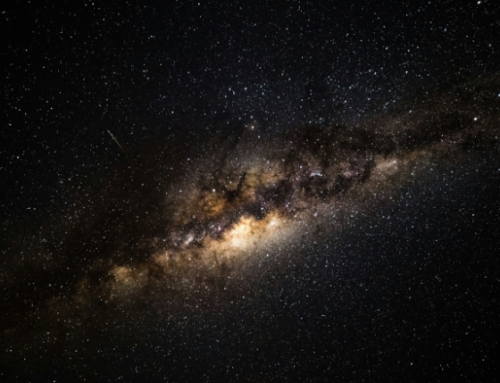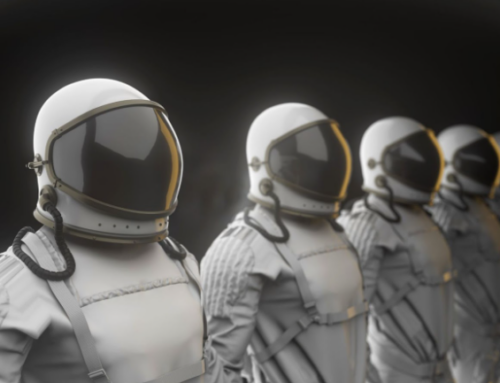An engineer, author, and former NASA astronaut, Mae Jemison, M.D. became the first Black woman in space in 1992. In so doing she showed herself to be a true renaissance woman – on Earth or in space. Jemison’s legacy is prominent nationally but especially so with the African American community. She has received numerous accolades for being a trailblazer and for her prominence in science and technology.
A deep look into her career shows the impacts she has had on space exploration and women in STEM.
Early Life and Education
Mae Jemison knew from an early age that she wanted to study science and someday go to space. The popular TV show “Star Trek” and the African American actress Nichelle Nichols’ portrayal, in particular, helped spark her interest in space exploration. Jemison studied biology and human physiology, using those observations to learn more about science.
Her teachers were somewhat less supportive of her dreams than Mae was. Seeing no female astronauts during the Apollo missions was frustrating for Jemison. “Everybody was thrilled about space, but I remember being really irritated that there were no women astronauts.”
Jemison enrolled at Stanford University at age 16. She soon became head of the Black Students Union. During her last year in college, she struggled to maintain the balance between attending medical school and pursuing a career as a professional dancer. She graduated in 1977 with a B.S. degree in chemical engineering and a B.A. in African-American studies. However, she also pursued studies related to her interest in space.
She later attended Cornell Medical School. After graduating with her M.D. in 1981, she interned at LA County-USC Medical Center and then worked as a practitioner for the Ross-Loos Medical Group. She next joined the Peace Corps staff in 1983. She served as a medical officer until 1985, being responsible for the health of Peace Corps volunteers who served in Sierra Leone and Liberia while also overseeing the pharmacy, laboratory, and medical staff. She also provided medical care, wrote safety manuals, and developed and established guidelines for health and safety issues. She also worked with the Centers for Disease Control to help research different vaccines.
NASA Career
After serving in the Peace Corps, Jemison returned to the United States and took graduate engineering courses while working as a doctor in private practice. The flights of Guion Bluford and Sally Ride in 1983 inspired Jemison to apply to the NASA astronaut program in October 1985. Unfortunately NASA postponed the selection of new astronaut candidates after the Space Shuttle Challenger disaster in 1986. After reapplying in 1987, she was chosen out of nearly 2,000 applicants as one of 15 people in the NASA Astronaut Group #12.
Before her shuttle launch with NASA, Jemison’s work included launch support activities and verification of Shuttle computer software. In 1989, she was selected to join the STS-47 crew as a Mission Specialist. She was designated as a Science Mission Specialist, a new role instituted by NASA to concentrate on scientific experiments.
STS-47 was Jemison’s first and only space mission. The flight and lasted from September 12- 20, 1992l, orbiting Earth 127 times. The mission’s seven crew members worked on a cooperative science mission between the U.S. and Japan. She and Japanese astronaut Mamoru Mohri were trained to use the Autogenic Feedback Training Exercise (AFTE), a system developed that takes biofeedback and autogenic training to help patients monitor and control their bodies as a possible way to treat anxiety, motion sickness and other stress-related disorders. Within the Spacelab-Japan module in the shuttle’s cargo bay, she tested NASA’s Fluid Therapy System as part of a process to produce saline solutions in space. She also co-investigated two bone cell research experiments while aboard, along with experimentation on inducing female frogs to ovulate, fertilize eggs and then see how tadpoles reacted and developed under microgravity conditions.
After her return to Earth, Jemison retired from NASA, intending to start her own company.
Post-NASA Career
In 1993, Jemison founded the Jemison Group, a consulting firm that considers the sociocultural impact of technology advancements and design. She also established the Dorothy Jemison Foundation for Excellence in honor of her mother. One of its major projects is “The Earth We Share”, a science camp for students ages 12-16. The Foundation also sponsors events and programs, including the “Shaping the World essay Competition”,” Listening to the Future, Earth Online” and “Reality Leads Fantasy Gala”. In 2012, she made the winning bid for the DARPA 100 Year Starship project (of which she is the current principal) through the Dorothy Jemison Foundation of Excellence, with the organization awarded a $500,000 grant for further work.
In 1999, Jemison founded the BioSentient Corp and was granted the license to commercialize AFTE, the technique she and Astronaut Mohri tested onboard STS-47.
From 1995 to 2002, Jemison was a professor of environmental studies at Dartmouth College, directing the Jemison Institute for Advancing Technology in Developing Countries. In 1999, she became Cornell University’s Andrew D. White Professor-at-Large.
Jemison continues to promote science education and more access for minority students interested in the field. She is a member of many scientific organizations, including the American Chemical Society, the American Medical Association, the Association of Space Explorers and the American Association for the Advancement of Science.
Jemison is an active public speaker and has authored books on STEM subjects for children, space exploration and a memoir of her life. She has received 19 honors and awards, including entry into the National Women’s Hall of Fame, the Buzz Aldrin Space Pioneer Award, and the International Space Hall Of Fame. She also has been honored with 14 honorary doctorate degrees from educational institutions such as Princeton University, Dartmouth College, and the University of Arizona.
While she only made one trip into space aboard an actual spacecraft, Mae Jemison did a cameo appearance on an episode of “Star Trek The Next Generation” where she portrayed a Transporter Officer. In this case art limited life, so to speak.
With a varied and illustrious career, Mae Jemison is one of the most inspirational, trailblazing examples and voices in STEM education and space exploration.
Check out more of Mae Jemison’s inspirational career and trailblazing accomplishments!






